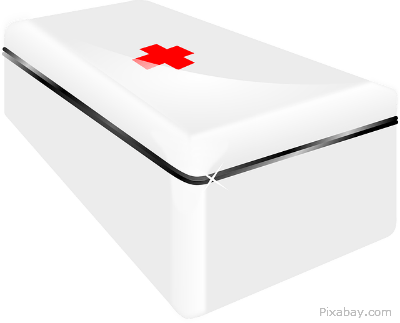A first-aid kit is helpful during an emergency--anything you need to treat ailments and injury is in one place and easy to find under pressure.

It's also imperative to have a first-aid kit with you when traveling or moving--accidents happen on the road and you may be unable to reach a drug store to get what you need.
While you can purchase ready-made first aid-kits in any store, you can also easily make one yourself. Read on to find out what should go in your homemade first-aid kit.
Making the kit
- Use a water-resistant, drop-proof container for first-aid kits that will travel with you, such as a nylon bag or make-up case.
- Use resealable zip-lock bags to keep like items together inside the kit--for example, keep ointments in one bag, pills in another, bandages and other wound care supplies in another, etc.
- Check the kit regularly to ensure items have not expired or become unusable for any reason. Check dates on medications and check ointment or liquid bottles for leaks or punctures.
Where to keep your first-aid kit
- Keep your first-aid kit in a commonly used room, such as the kitchen or the bathroom, in a place where everyone in your family can easily reach and access it. Bathrooms sometimes have higher humidity than other rooms in the house, which could cause items in your kit to expire faster.
- If you have a second kit for travel, keep it in your suitcase so you won't forget it before a big trip.
- You should keep a first-aid kit on your car as well, in case of any emergency on the road.
What to include
The basics. Your first-aid kit should include all the essentials for treating cuts, burns, abrasions, sprains, skin problems, allergic reactions, fever, cold, congestion, sore throat, cough, mild pain, and stomach ailments.
Some important items include:
- Gauze pads
- Ace bandages in varied sizes
- Adhesive tape
- Adhesive bandages in varied sizes
- Nonadhesive pads for covering wounds and burns
- Antiseptic wipes
- Antibiotic cream or ointment
- Anesthetic spray for rash or itching
- Hydrocortisone cream for itching
- Diphenhydramine (antihistamine) for allergic reactions
- Exam gloves for hygienic reasons
- Pocket mask for CPR
- Resealable zip-lock bag for contaminated articles,
- Safety pins to secure bandages
- Scissors
- Tweezers for splinter, stinger or tick removal
- Instant cold compress
- Oral thermometer
- Aspirin, ibuprofen, or other over-the-counter pain reliever/fever reducer
- Over-the-counter acid reducer or gastrointestinal medication
- Cough medicine
- Decongestant
Important medications. A small supply of prescription medications, an EpiPen, inhaler, or any other specific health care items needed by your family should be included in any first-aid kit used for traveling. Make sure you include enough
medication to last you your trip's duration, plus a little extra in case you are delayed.
Medical history. Write down a brief medical history for each family member and include that in your first-aid in case emergency personnel needs the information. Include past and current conditions, illnesses, and any allergies (specifically to medications).
Emergency info. Keep a list of all emergency phone numbers, such as the police, hospital, fire department and poison control to keep inside your first-aid kit. You may want to include doctor's office phone numbers as well.